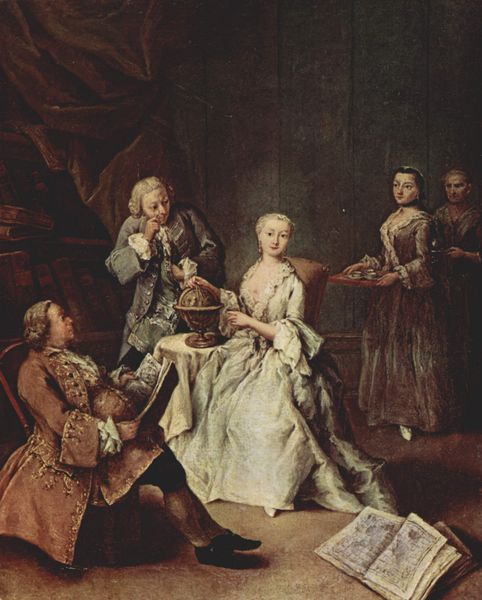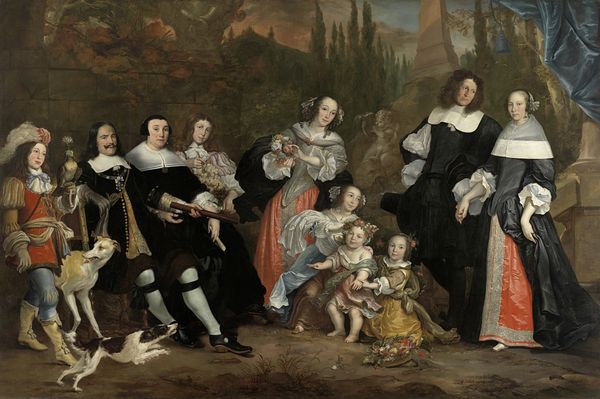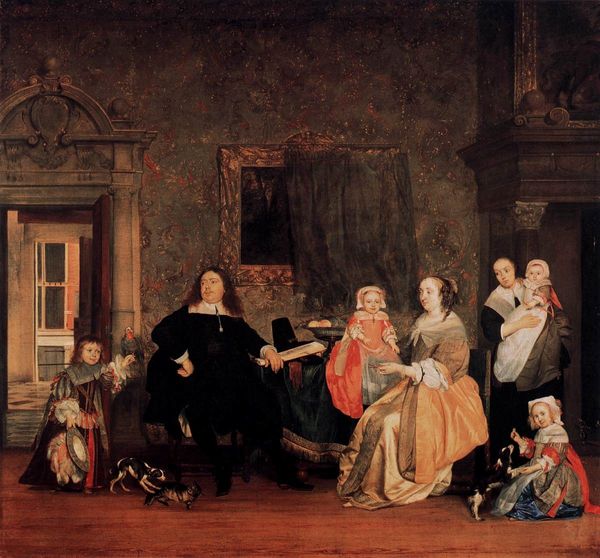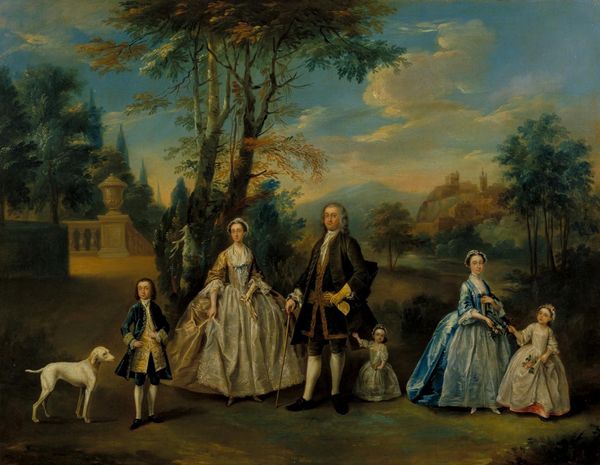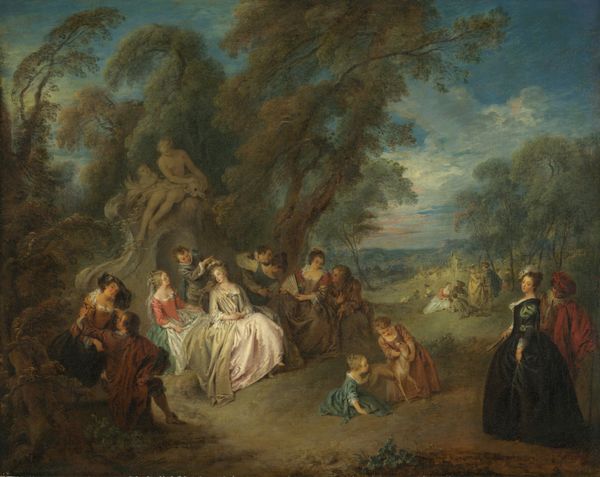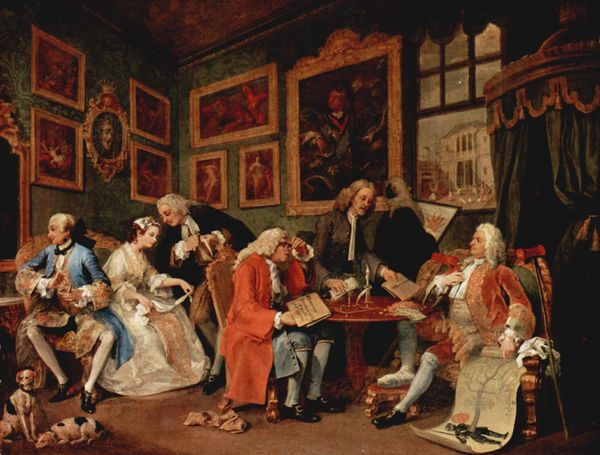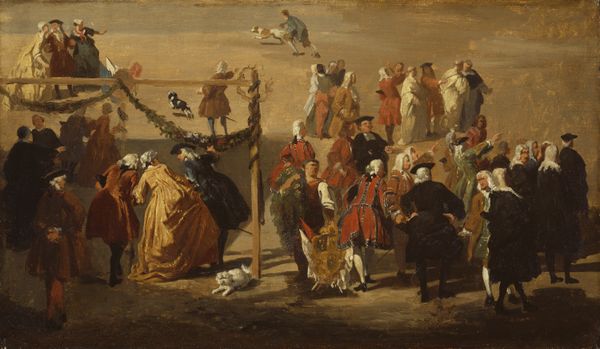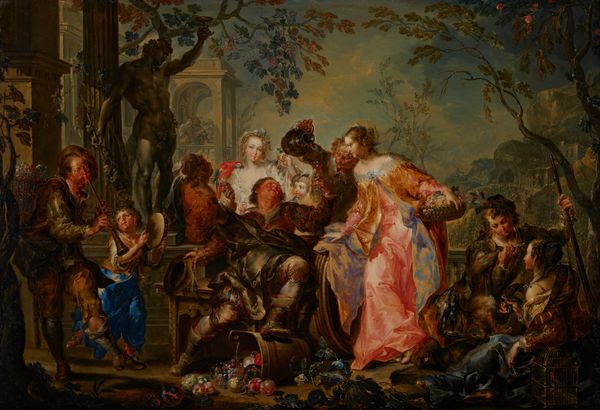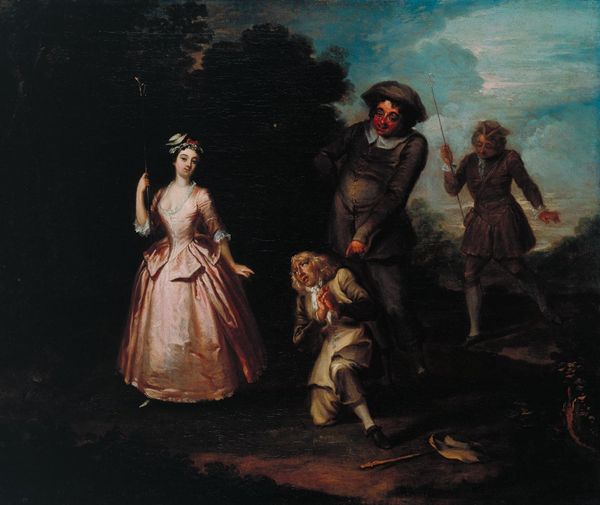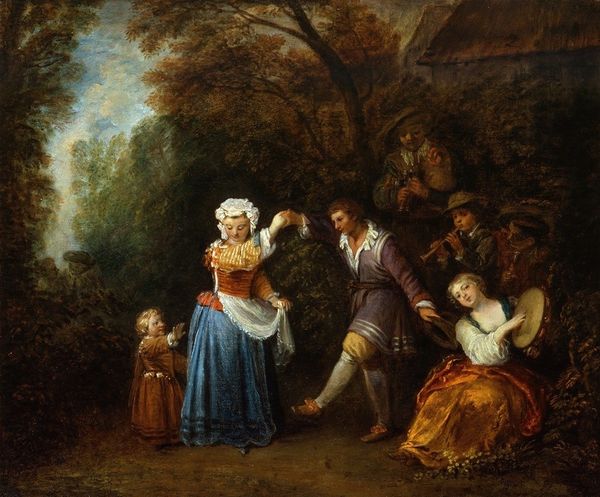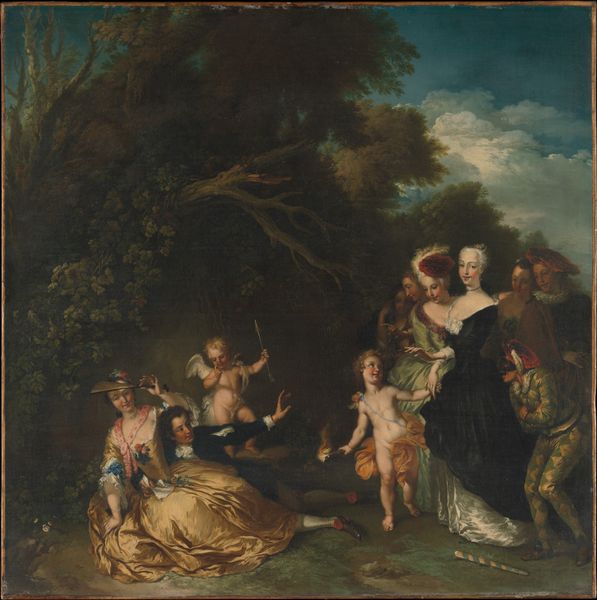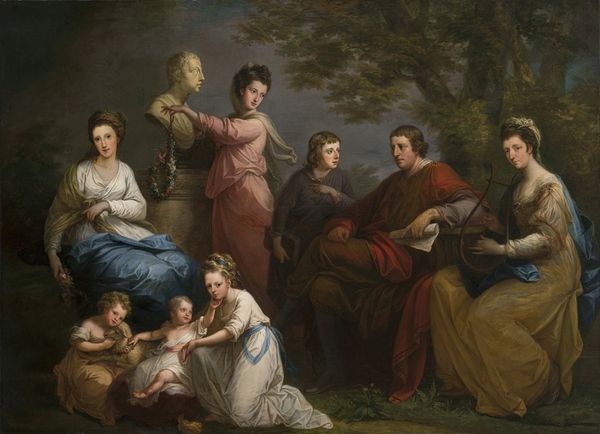
A Family Group on a Terrace in the Grounds of a Villa. Possibly the English Businessman George Jackson and his Family 1737
0:00
0:00
oil-paint
#
portrait
#
gouache
#
oil-paint
#
landscape
#
oil painting
#
group-portraits
#
genre-painting
#
rococo
Dimensions: 140 cm (height) x 223.5 cm (width) (Netto)
Curator: Ah, this captivating work, dating back to 1737, is believed to be by Marcus Tuscher. It's entitled "A Family Group on a Terrace in the Grounds of a Villa, Possibly the English Businessman George Jackson and his Family" and it certainly captures a moment of privileged domesticity. Editor: My first impression is one of opulent serenity. The balanced composition and harmonious color palette contribute to a feeling of tranquility. Curator: Absolutely. And the arrangement speaks volumes about the family dynamics and social conventions of the era. Look at how the figures are positioned. The pater familias presides, book in hand, a signifier of wealth and intellect. Editor: Note how the artist renders each element with such exquisite detail – from the cascading fabrics to the meticulously depicted flora, not to mention the human figures with great realism of texture, expressions and forms. Curator: I find it intriguing that the only people of colour within the family portrait were enslaved individuals acting as servants and rendered as adornment. What are your thoughts on its colonial undertones? Editor: The strategic use of color definitely elevates certain subjects. For instance, the interplay between light and shadow casts our focus toward the light silk clothing, creating volume and dramatic effect. The red accent of one of the servants gives a touch of liveliness to the setting without shifting our eyes. Curator: It's vital to acknowledge that this isn't just a harmless portrayal of a family, it’s also a window into a system of oppression. The Black presence speaks of colonial exploitation and demonstrates the systematic normalisation of racial hierarchies. Editor: By observing the distribution of space, use of light and placement of the people in a very dynamic asymmetrical construction, Tuscher’s composition is more complex than one might think at first. What message is transmitted to the viewer? Is the scene supposed to transmit authority, perhaps social class and the family name, over wealth or influence, intelligence, virtue and family bonds. Curator: I think we both agree that this painting’s beauty cannot mask its more problematic dimensions, which, upon a close viewing, speaks truth about historical imbalances. Editor: Indeed, delving deeper beyond aesthetics reveals much. The experience certainly reinforces art’s incredible capability for communicating complicated and unsettling perspectives.
Comments
statensmuseumforkunst almost 2 years ago
⋮
In all likelihood the people being waited upon here are the British consul in Livorno, George Jackson (1692–1763) and his family. Jackson is shown holding a book. He is not presented as a government official serving the mercantile interests of his country, but rather as a fervent bibliophile – another aspect of his personality: he collected manuscripts and rare books. His wife and three daughters may be presented as Flora, goddess of flowers, and her little aides. The artist has signed his work with the inscription MARCVS TVSCHER NORICVS.FACIEBAT.LIBURNI. MDCCXXXVII (Marcus Tuscher of Nuremburg painted this in Livorno 1737). With this detailed inscription Tuscher not only lets us know where and when the painting was painted, but also that he is a learned artist himself.
Join the conversation
Join millions of artists and users on Artera today and experience the ultimate creative platform.
